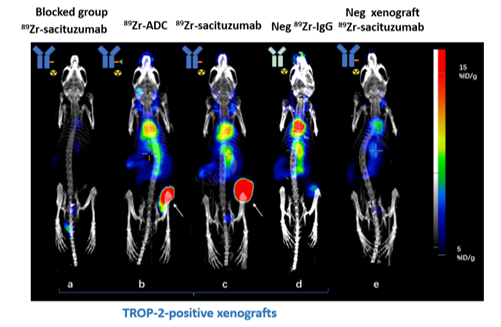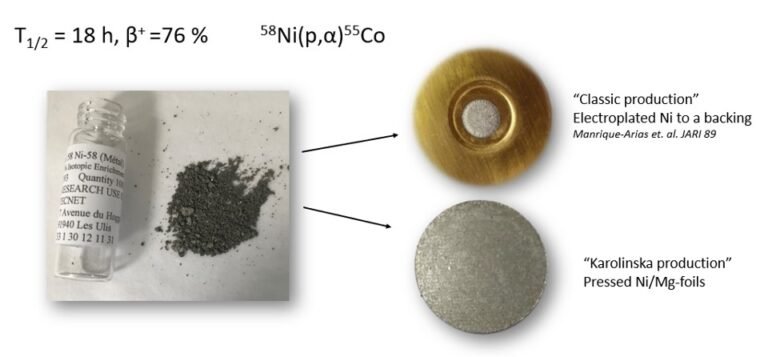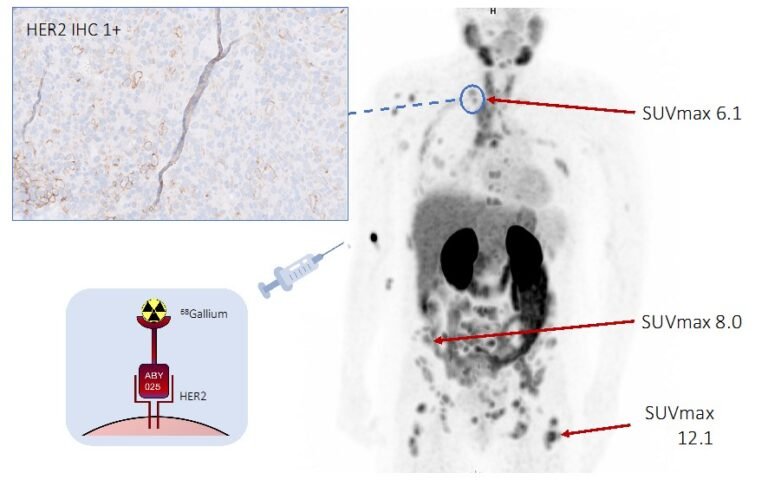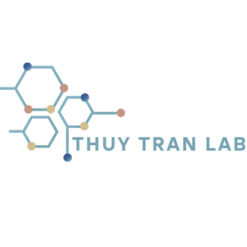Our Research
About Theranostics
The developments of radiopharmaceuticals, radioactive drugs, for targeted therapy and diagnostics, so-called theranostics, have gained significant momentum in cancer medicine over the last decade. It refers to a cutting-edge approach, “see what you treat and treat what you see”, in cancer medicine that combines the therapeutic and diagnostic processes to tailor treatment to individual patients.
By radiolabel targeting agents (such as small molecules, peptides or antibodies) with a positron-emitting radionuclide (for example, fluorine-18; gallium-68 or zirconium-89) or therapeutic radionuclides (alpha particles using actinium-225 or astatine-211 or beta emitters using lutetium-177 or iodine-131), the molecular features of a cancer target can be noninvasively visualized by positron emission tomography (PET) respectively treated by molecular radiotherapy. A great example of successful theranostic applications currently used in cancer patients is the [68Ga]Ga-DOTATOC/[177Lu]Lu-DOTATATE for neuroendocrine tumours and [68Ga]Ga-PSMA-11/[177Lu]Lu-PSMA-617 for prostate cancers.
Some of our current research projects:
Targeted radiopharmaceutical therapy for high-risk neuroblastoma (NBL)
We aim to identify and validate novel targets for targeted alpha therapy (TAT) in high-risk neuroblastoma, which could be effective to irradiate micro-metastasis for improving treatment outcome of high-risk NBL in children. Our current strategy at this early drug development phase is to broadly drug screen both small molecules and large substances (antibodies).
This project is performed closely with Assistant Prof Kasper Karlsson and Associate Prof Jakob Stenman using the national infrastructure platform at DDD/SBCS at Scilifelab. Here below is a violin plot depicting single cell RNA expression of several gens across 10 different NBL tumors (A), and the off target expression from the Human Protein Atlas (B) and the verification of cell surface localization of the top targets using immunofluorescence (C). (Unpublished data).

TROP2-targeted radiothernostics in solid tumours
The overall aim of this project is to develop radiotheranostics, i.e. a combination of both therapeutics and diagnostics in one package, based on radiolabelled novel monoclonal antibodies (mAb) targeting TROP-2 (Trophoblast cell surface antigen 2) expression in metastatic solid malignancies, with the focus on the hard-to-treat cancer types: metastatic triple-negative breast cancer (mTNBC), luminal HER2-negative breast cancer and metastatic urothelial cancer (mUC). The radiotheranostics concept utilizing a TROP-2 specific monoclonal antibody will provide a platform for a combination of therapeutics and diagnostics in one package for image-guided therapy, defining the treatment outcome and providing a possibility to individualize treatment.
This project collaborates with several oncologists and radiologists, and the team at the Theranostics Trial Center, TTC for bringing first-in-class theranostics into patient care. Image below illustrates the TROP2-targeted antibody localization in an animal model, imaged by a microPET/CT (unpublished data).

Cyclotron-produced radiometals using solid target
For molecular imaging applications, it is important to match the physical half-life of a radionuclide with the biological half-life of the molecules that are used; i.e. small molecules with fast kinetics should be labelled with short-lived while long-lived radiometals are well suitable with antibodies that have slow kinetics.
With the access to a solid target on one of the Karolinska Radiopharmacy’s 2 cyclotrons, we aim to develop and produce several radiometals with unmet needs in nuclear medicine for labelling different molecules, such as cyclotron-produced gallium-68 (68Ga), titan-45 (45Ti), cobalt-55 (55Co) copper-64/61 (64Cu, 61Cu) and zirconium-89 (89Zr). Here below is a figure showing the pressed Ni/Mg foils for production of Co-55 (unpublished data).

Clinical trials of theranostics at Karolinska
As part of the Theranostic Trial Center, we develop radiochemistry, labelling methods for bringing the promising radiopharmaceuticals from preclinical to first-in-human studies. We collaborate closely with other research group leaders, investigators, clinicians and sponsors, as well as several corefacilities at Karolinska.
Our current project focuses on creating new radiopharmaceuticals for cancer treatment and diagnosis, targeting specific cancer tatargets such as SSTR2, HER2, FAP protein, GRPR, and PD-L1 receptors. Here below is a PET image of a breast cancer patient who received the HER2-targeted [68Ga]Ga-ABY025 tracer (Submitted data to JNM, under revision)

